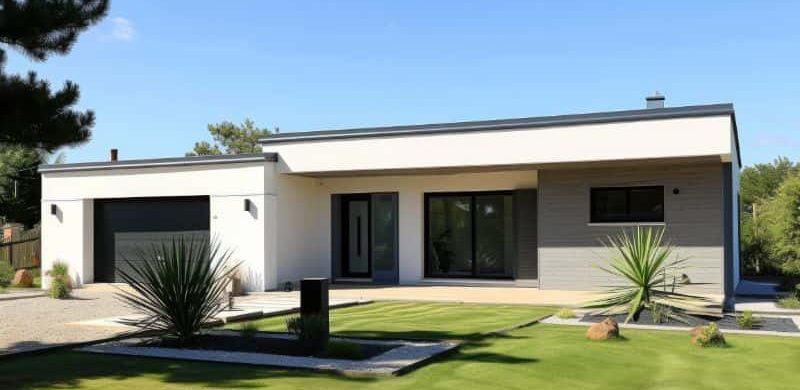


GET 3 QUOTES FROM CONTRACTORS FOR RENOVATION WORKS
"*" indicates required fields
TPO vs. EPDM Roofing: Which one to choose?
Many residential and commercial properties have a flat roof. There are several options for flat roofs. It is important to know which type suits your property best.
A rubber membrane roof offers the most value insofar as durability, cost of installation, and longevity are concerned. You can choose between a Thermoplastic Olefin Roof (TPO) and an Ethylene Propylene Diene Monomer Roof (EPDM).
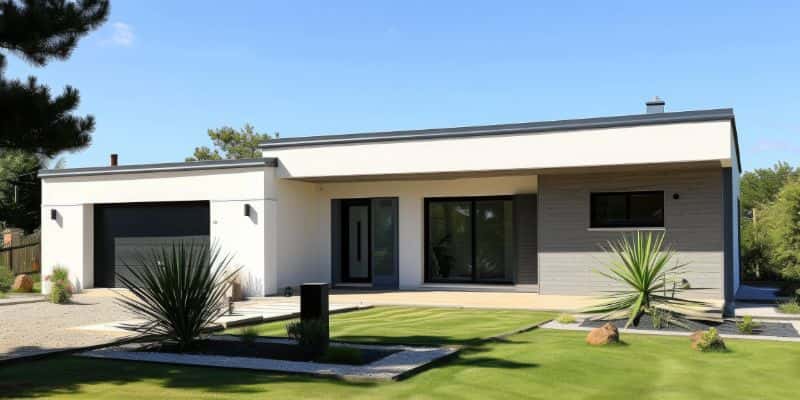
Both types of rubber membrane roofs offer distinct advantages and disadvantages. Read on to know more and be able to choose the best one tailored to your needs and budget.
Anytime you are ready to compare prices, just fill out the free online form on this page and receive no-obligation offers.
Which one is more durable – TPO or EPDM?
Both of these rubber membrane roofing materials can last for several decades with proper installation.
Any roofing material, when not correctly installed, can prematurely deteriorate and require early repairs or replacement.
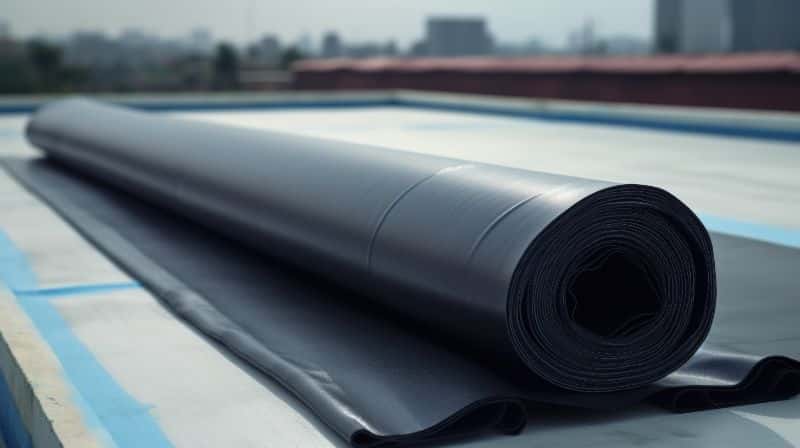
For a rubber roof membrane, the thickness is critical, whether it is made with TPO or EPDM. Aside from the thickness, the seams must be attached very well to prevent leaks or damage.
While TPO is relatively new, its seams are 4 times stronger than EPDM but this does not necessarily mean that it is the better option altogether.
Most TPO roofs last for 15 years but they were designed to last for multiple decades. EPDM roofs have been around much longer and examples of such roofs that are 25 years or older can be seen. EPDM roofs also withstand cold climates, making them very ideal for the Canadian climate.
Maintenance of TPO and EPDM Roofs
Single-ply roof membranes need only a little bit of tender loving care during their lifetime. Most maintenance tasks will be related to the roof seams.
EPDM roofs tend to need more maintenance because the seams are treated with adhesive. TPO roofs, on the other hand, have hot-air welded seams that result in a permanent seam.
TPO roofs will also need repairs or maintenance over the years. Exposure to the elements can cause natural deterioration wherein the membrane loses thermoplastic abilities and pliability. Repairs can be done easily by qualified roofing contractors.
The Pros and Cons of EPDM Roofs
When choosing the right material for a flat roof, you will find that the most popular choices are TPO and EPDM roofs. Below you will find the pros and cons of EPDM roofs so you can make an informed decision.
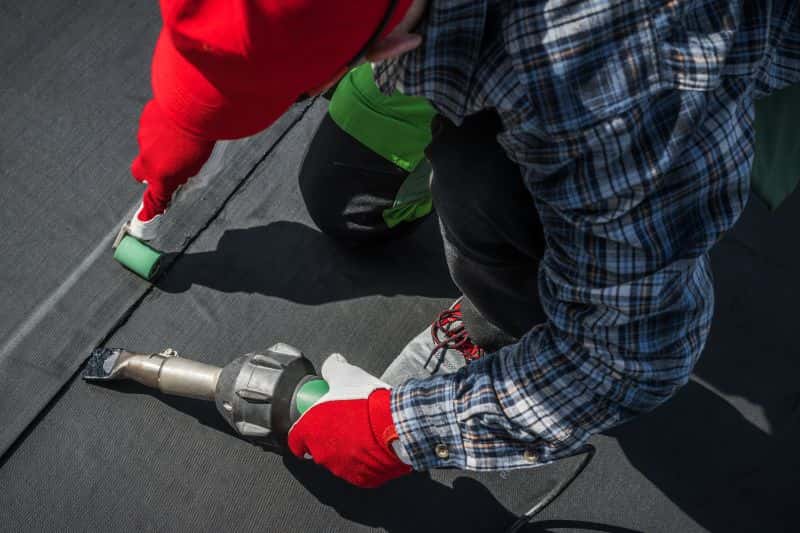
Durability: The durability of EPDM roofs has been tested. They can last 30 years or more when properly installed and maintained.
Cost-effectiveness: An EPDM roof is generally cheaper than a TPO roof, making it an appealing option for homeowners and commercial property owners.
Flexible: EPDM is very flexible and will expand and contract due to changes in temperature without cracking.
Easy to repair: EPDM can be relatively easy to repair when damaged using patches and sealants.
Resistance to UV: EPDM roofs are resistant to UV exposure which prevents premature degradation.
The Disadvantages of EPDM Roofs
An EPDM roof is not without its disadvantages. Learn what they are before you make your choice.
Susceptibility to Punctures: EPDM roofs can be punctured when hit by objects such as nails, branches, or hail which could cause leaks.
Not Eco-Friendly: Because they are made from synthetic materials, EPDM roofs are not eco-friendly.
Limited Choices: EPDM roofs are available in black and have limited design options.
Regular maintenance requirements: Although EPDM roofs last long, they need periodic inspections and maintenance to last long.
Are you interested in installing an EPDM roof on your property? Compare prices and roofing contractors in your area using our short online form.
Pros and Cons of TPO Roofing
TPO roofs have become popular because they are easy to install and are energy-efficient. Below you will find everything you want to know about the pros and cons of TPO roofs.
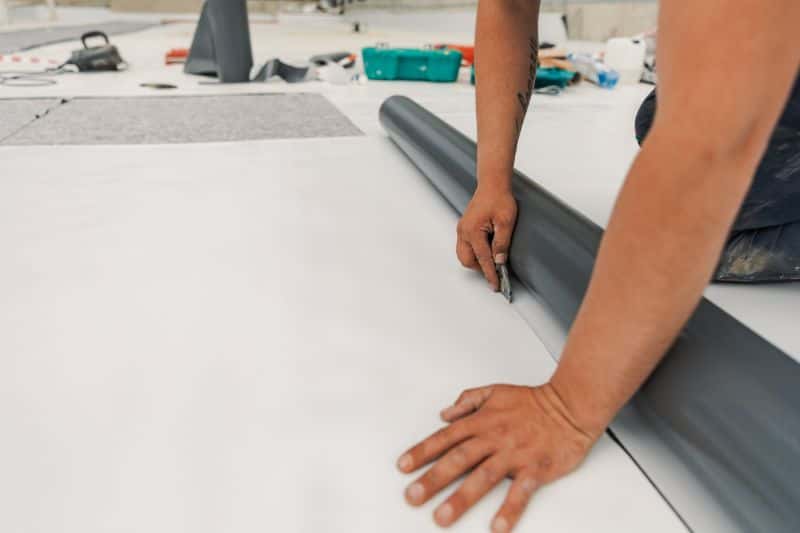
The Advantages of TPO roofs
- Energy Efficient: Being highly reflective, TPO roofs absorb heat and reduce cooling costs.
- Eco-Friendly: They are made from recyclable materials and are more sustainable than EPDM roofs.
- Chemical Resistant: TPO can resist pollutants and chemicals which make it ideal for industrial areas.
- Color options: Unlike EPDM which comes only in black, TPO is available in white which helps to reduce the absorption of heat and lower cooling costs.
- Watertight seams: TPO roofs are heat-welded, making them airtight to prevent leaks.
The Disadvantages of TPO Roofs
Shorter Lifespan: TPO roofs are said to last for as long as 20 years with proper maintenance. However, they don’t last as long as EPDM roofs.
Tendency to Shrink: TPO roofs are known to shrink over time which could cause leaks.
Water pooling: You must have a proper slope on a TPO roof to prevent water pooling.
Higher cost: TPO roofs are more expensive than EPDM roofs.
Cost of TPO & EPDM Roofing in 2025
Find out how much you can expect to pay for a TPO or EPDM roof. Keep in mind that the size of the roof, your location, and your choice of roof contractor, are factors that play a significant role in the cost of your project.

TPO Roofing
This type of roofing has become quite popular because it is environment-friendly. It uses heat to create a watertight seal and reduce heat exchange. It is more popular in commercial properties although many homeowners have also chosen TPO roofs.
The average cost of TPO roofing in Canada is around $7 to $12 per square foot, making it a viable option for budget-conscious property owners.
EPDM
As a versatile roofing solution in challenging environments such as Canada’s cold climate, an EPDM roof lasts for decades when done the right way.
At an average cost of $8 to $14 per square foot, you can get a huge return on your investment.
TPO and EPDM roofs are the most affordable flat roof materials and have similar lifespans to asphalt shingle roofs – 25 to 30 years.
Depending on your location (roofing costs are higher in cities like Toronto and Vancouver), you can expect to pay anywhere from $11,000 to $18,000 for a TP0/EPDM roof.
For accurate quotes, request free and no-commitment offers from our reputable roofing partners using the short online form on this page.
Choosing between EPDM & TPO Roofing for your Property
As you can see, both TPO and EPDM roofs have their pros and cons. Consider the following factors in making the right roofing choice.
Your budget: Consider the upfront cost and maintenance costs. A TPO and EPDM roof will vary in price so choose one that fits your budget.
An EPDM roof will cost less at installation but requires more maintenance in the long term. While a TPO roof will cost more in the beginning, you can save more money on maintenance costs and energy costs.
Climate
The local climate is a significant factor when choosing between TPO and EPDM roofs. EPDM roofs work well with the extreme temperatures in Canada due to their flexibility and resistance to temperature changes.
Longevity
A new roof is an investment that should last as long as possible. EPDM and TPO roofs are durable but they have different lifespans. An EPDM roof could last from 20 to 30 years when properly maintained.
Energy Efficiency
If you want to reduce your energy bills, TPO roofs are known to help keep the home cool in the summer and warm in winter. Because of its energy efficiency, a TPO roof can lower energy bills from air conditioning and heating throughout the year.
If energy efficiency is not your highest priority, an EPDM roof can offer excellent benefits at a lower price.
There is no definite winner when it comes to choosing between TPO and EPM roofing. Weigh your priorities and get in touch with our roofing partners to get expert roofing advice tailored to your needs.
Compare Reliable Roofers for a TPO/EPDM Roof Replacement
Homeowners planning a roof replacement should consider the cost, climate, aesthetics, and other personal considerations. There is, in many instances, more than one option for your roofing needs.
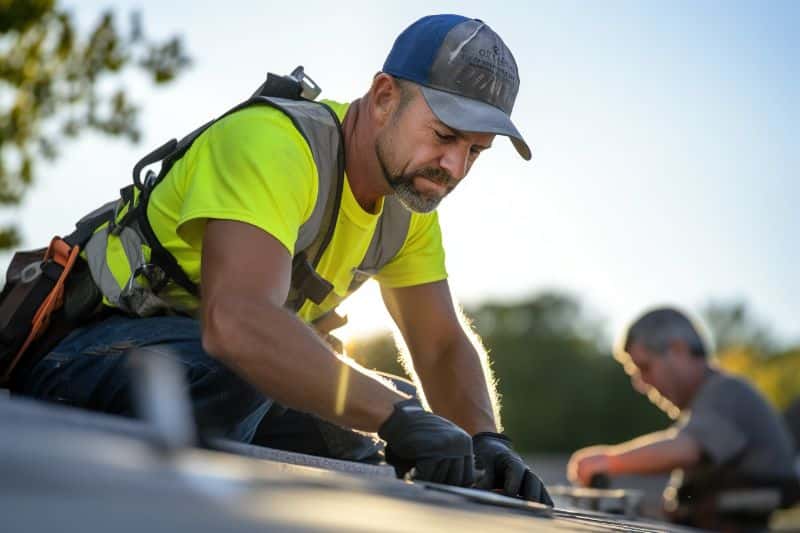
We hope that the information in this article has given you a brief overview that will point you in the right direction for your roof renovation.
Whether you have decided on an EPDM roof or still want to explore other choices, our roofing partners across Canada are at your disposal.
Get their expert opinion to help you find the best roofing option for your home and save money by comparing multiple quotes.
For more accurate quotes on your roofing requirements, fill out the short online form below and receive no-obligation offers at your convenience.
Comments are closed.



GET 3 QUOTES FROM CONTRACTORS FOR RENOVATION WORKS
"*" indicates required fields
Copyright© 2025 Compare Home Quotes.
Oolong Media





